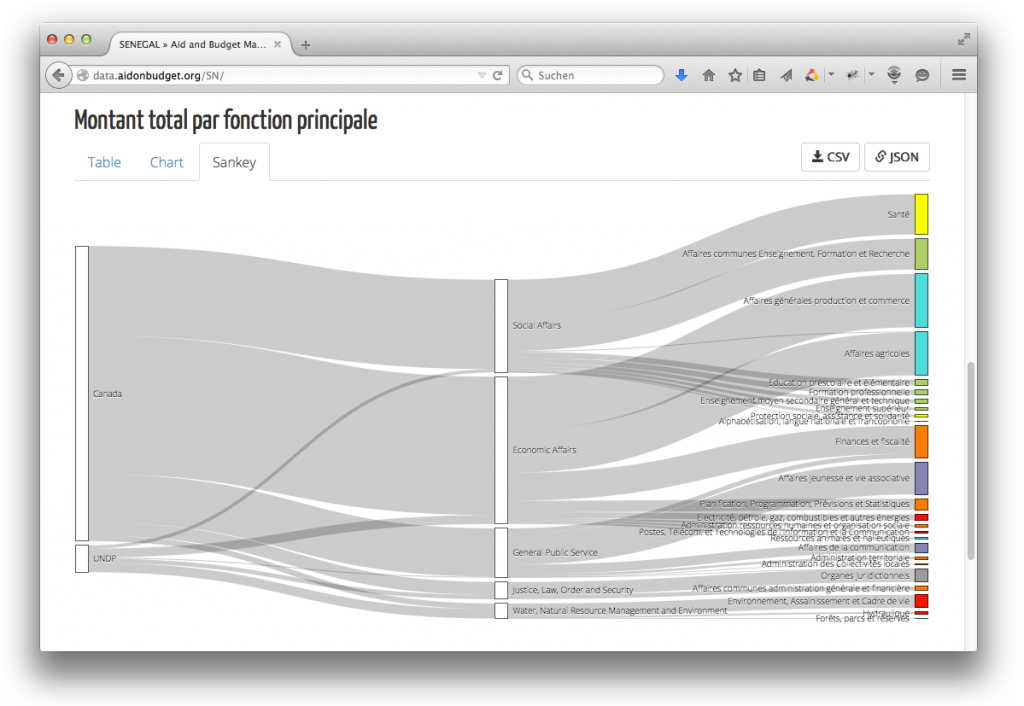Aligning aid and budgets: A call to OECD DAC
Over the last few months, we’ve been working with five donor partners (Canada DFATD, DFID, UNDP, USAID and the World Bank) to pilot the integration of aid with partner country budgets in five countries. We have found this approach to be successful in mapping aid to country budgets, in order to create a full picture of the finances governments have available to them. You can see the results of this work on our new Aid on Budget website.
We will now be working with our partners to bring forward a proposal to implement this work at the OECD DAC’s Working Party on Development Finance Statistics, at their formal meeting on 21/22 May.
Why is all this important? Simply put, if partner countries don’t have information on donors’ aid activities that makes sense in the context of their own resources — particularly their budget — then it’s very hard to plan effectively. If a donor builds a road and doesn’t say how much money is available for ongoing maintenance of the road then the government might not budget for repairs (this is the economic classification). If several donors are funding IT infrastructure projects across the country, but the budget office doesn’t know this, then the Ministry of Communications could ask for money for a duplicative project (the detailed sectoral classification helps with this).
What did the pilots do? The pilots took place in DRC, Haiti, Moldova, Nepal and Senegal. Some 95% of aid activities could be mapped to the relevant country budget; in some countries, it was almost 100%. We also found some wide variations in the proportion of aid that was capital or recurrent expenditure (the economic classification). The findings provide strong support for including some more specific sector codes and the economic classification in donors’ aid data.
We used publicly available data from five donors – IATI data in all but one of the pilots. The piloting then involved working with those donors to provide a little more detail on the purposes of their activities. A simple mapping table provided the final link on to the partner country’s own budget classifications.
In the case of DRC, Moldova and Senegal, we received some detailed feedback on the methodology and mapping tables, and in Moldova and Senegal we held face to face meetings to work these through. You can see an example of the mapping to the budget in Senegal below:

So what are we asking donors to agree to? The full proposal is available on our Aid on Budget site. In short:
- The mapping to Ministries and functional (like sectoral) classifications can be achieved from disaggregating some currently very broad sectors, which are not possible to map directly to the budget. For example, “public administration” should be disaggregated to audit, tax collection, budgeting, etc.
- Capital versus recurrent expenditure can be identified by including a simple field to identify the percentage of an activity that is capital (and therefore not recurrent)
We’ve worked hard with our partners to ensure that this is a proposal that is the most simple and cost-effective to implement, while still ensuring that we achieve the same end result – enabling donors and partner countries to see the full picture and to make better decisions about how to use scarce resources.
The OECD DAC’s Working Party on Development Finance Statistics will be asked to decide on this in one month. We hope this important opportunity is seized.
Related posts:
Donor financing for gender equality: spending with confusing receipts
Debt relief as ODA – why it’s looking bad for aid transparency

